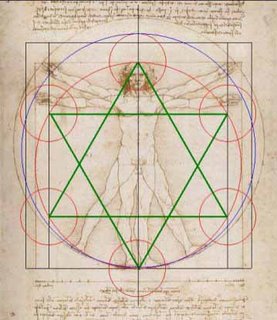
Sacred geometry is geometry that is sacred to the observer or discoverer. This meaning is sometimes described as being the language of the God of the religion of the people who discovered or used it. Sacred geometry can be described as attributing a religious or cultural value to the graphical representation of the mathematical relationships and the design of the man-made objects that symbolize or represent these mathematical relationships. The golden ratio was often used in the design of Greek and Roman architecture. A contemporary usage of the term describes a supposed re-discovered mathematical order to the intrinsic nature of the Universe that is represented in crop circles and in ancient architecture such as the Great Pyramid and Stonehenge.The golden ratio, also known as the god ratio, golden proportion, golden mean, golden section, golden number, divine proportion or sectio divina, is an irrational number, approximately 1.618 033 988 749 894 848, that possesses many interesting properties. Shapes proportioned according to the golden ratio have long been considered aesthetically pleasing in Western cultures, and the golden ratio is still used frequently in art and design, suggesting a natural balance between symmetry and asymmetry. The ancient Pythagoreans, who defined numbers as expressions of ratios (and not as units as is common today), believed that reality is numerical and that the golden ratio expressed an underlying truth about existence.
The universe is created by thought consciousness which manifests in physical reality through a geometric blueprint that we call Sacred Geometry. It repeats in cycles giving the illusion of linear time so we can experience emotions. The term "sacred geometry" is used by archaeologists, anthropologists, and geometricians to encompass the religious, philosophical, and spiritual beliefs that have sprung up around geometry in various cultures during the course of human history. It is a catch-all term covering Pythagorean geometry and neo-Platonic geometry, as well as the perceived relationships between organic and logarithmic curves.
No comments:
Post a Comment